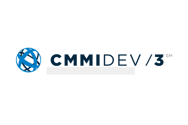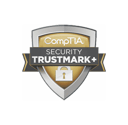Let me start off by saying I’m somewhat of a grisly veteran when it comes to attending Oracle OpenWorld, having attended more than a handful of OpenWorld conferences over the years.
Not on the Cloud? You’re Not Alone.
With each passing year, it’s more about the cloud (particularly with the keynotes) and less about the hardware solutions, so if your IT is on-premise, you question if you are behind the times. At least in the sessions I attended, numerous speakers took a poll and the overwhelming response showed that you are not alone if you are staying with the on-premise model for now. It turns out very few attendees were leveraging the cloud, any cloud for that matter. I’m sure this poll will show increasing cloud adoption with each passing year, but it was almost reassuring to know most others have not moved to the cloud and that you are not that behind the times compared to the overall Oracle community if you still use on-premise IT.
In addition, it was surprising to learn that most people were still on Oracle database version 11g. I’ve done some private sector work, but the majority of my recent experience is with the public sector with Oracle versions 12.1 or 12.2. Let’s just say some segments of the government are not known for being that cutting edge but in comparison, perhaps they are.
Top Technical Takeaways
Anyway, a lot of information was covered across a wide array of sessions and keynotes. Below are the top technical takeaways from attending Oracle OpenWorld 2018 in no particular order:
1. Oracle announced their next generation of the Oracle Cloud during Larry Ellison’s keynote. The new Oracle Cloud claims to be significantly cheaper and much faster than AWS with a demo showing as such regarding the performance of Oracle Cloud autonomous database versus AWS Aurora, Redshift and Oracle on AWS. Oracle certainly did their best to make their claim for considering the Oracle Cloud.
2. Oracle Cloud will be FedRAMP medium “soon” and high in 2019, assuming later in the year. For government customers with this requirement, it’s been a long wait which has only caused other cloud solutions to gain market share in the government space for earlier adopters.
3. Oracle 19c “should” be out by mid-2019. If you are expecting lots of new bells/whistles with 19c, you should lower your expectations. There will be a few new features but not what we’ve come to expect with a major revision.
4. Oracle 18c auto upgrade could be an ideal solution for performing multiple upgrades at once even across multiple servers. Not quite as fast as doing them manually but being able to do these in parallel is a potential game changer.
5. There were lots of discussions on Oracle Management Cloud, an enterprise type solution with multiple Exadatas, hybrid, and/or Oracle Cloud. The centralized logging, auditing, and dashboards this tool features are reminiscent of many capabilities currently available with Splunk.
6. The top setting for improving Oracle networking performance is setting default_sdu_size=2m with Oracle 12.1+. This needs to be done on both the client and the server side.
7. Autonomous database offers a number of security features of value. If you work with customers who must meet strict security compliance requirements, these are probably things you are already doing but if not, it may be worth a look. The security features include Transparent Data Encryption (TDE), TLS authentication, Unified Auditing, Data Security Cloud Service, and automated patching. Also, auto indexing was discussed with 19c where Oracle will automatically add indexes to improve performance.
8. The Database Security Assessment Tool will have all security checks tied to the Department of Defense (DOD) Security Technical Implementation Guide (STIG) findings. For DOD customers, it’s a step in the right direction.
9. Trace File Analyzer (TFA) continues to be released with updated functionality to support regular DBA use, no longer just a tool to capture results required for working with Oracle Support.
10. With 18c, some of the cool new features include a rpm install with required OS packages, read-only homes for improved security, private temporary tables, and password-less schemas. If you have to change passwords regularly and have lots of schemas, this last feature will be a real time saver and will greatly improve the overall security posture.
11. Oracle 19c includes expanded fast/EZ connect settings for SSL along with a full array of parameters to enhance security. Encrypting the data dictionary through TDE will be another nice security enhancement.
12. Pluggable Database (PDB) Lockdown Profile was mentioned in several sessions. If you didn’t want a pluggable database to have a certain capability such as partitioning to potentially save on licensing fees and/or for other reasons, this may be a feature to consider.
13. PDB Snapshot allows flashback database type capability along with the ability to open as a separate database for point-in-time reporting. Having multiple use cases may result in DBAs ditching flashback database for this new feature, assuming they have PDB implemented.
14. Container Database (CDB) Fleet can now establish a master container with container members to centrally access metadata for the entire fleet. It centralizes the data through a database link by querying all containers that are part of a fleet.
15. Once you get to 18c, all partitioning options are now online (split, merge, and create index, among others). If you are a heavy partitioning shop, this will be a nice time saver to minimize impact to production users.
Much like Oracle OpenWorld, this blog just gives you some potential areas for conducting additional research to learn more about new capabilities. The only constant in life is change and in keeping with that mantra, Oracle continues to evolve. Look for future blogs to drill down on some of these key capabilities for more of a deep dive into the key features which will have the most potential positive impact.















